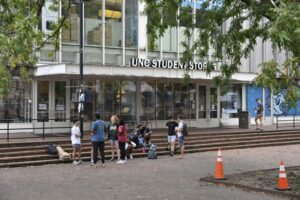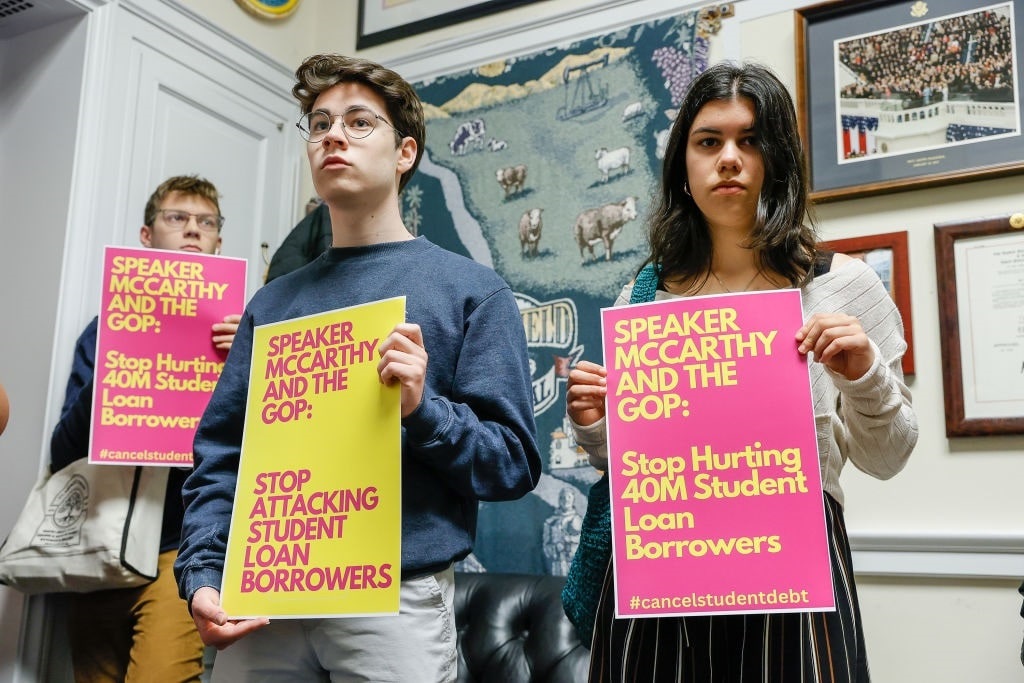As English playwright Ben Johnson wrote, “Time is like a bald cheetah.” Or, as the indebted cool kids around the block like to say, time flies when you do not have to pay your obligations. That’s right! Back to school also means millions of Americans will need to begin paying off their student loans again, leaving scores of graduates and students in a dilly of a pickle in the fall. Will this result in financial pain for those with a degree in lesbian dance theory? The data suggest yes.
Paying Your Student Loans
The Department of Education’s pandemic-era student loan forbearance program will come to an end. In September, interest on student loans will begin accruing, and payments will start in October. If you have been out of school for a while or your son or daughter did the sensible thing and studied the trades, you might not have known that Uncle Sam paused federal student loan payments and slashed rates to 0% at the start of the COVID-19 public health crisis, giving millions of students a nice break from responsibility.
Of course, there is some hope for graduates to delegate their responsibilities to taxpayers as President Joe Biden and his administration have revealed and proposed various schemes to forgive student loans. Until the White House announces more relief, university and college students must keep up with their fiscal duties. But the numbers show that this will be tougher than being unable to log in to TikTok or understanding Vice President Kamala Harris’ word salads.
From Boycotts to Defeat
As of the second quarter, federal and private student loan debt total is about $1.7 trillion, according to the Federal Reserve Bank of New York. The average borrower owes $28,950. Fifty-five percent of this debt is owed by borrowers 40 and younger. The typical repayment term is ten years, but Bankrate.com notes that it can take students as long as 30 years to pay off student loans. The good news is that the delinquency rate has cratered, although experts warn this could jump by the year’s end.

(Photo by Jemal Countess/Getty Images for We, The 45 Million )
While these are terrifying figures, they get only worse when diving deeper into borrowers’ minds.
A recent Life and My Finances poll learned that half of student borrowers will not earn enough to make payments following the three-year pause. Within this percentage, roughly a fifth note that they might need to borrow the money. Others plan to reduce their retirement contributions or not make payments at all.
That said, it would greatly help if borrowers knew how much they owed taxpayers. According to a new NerdWallet survey, 46% with federal student loans concede they do not know how much student loan debt they possess. The same study reported that most borrowers utilized would-be student loan payments to cover their necessities.
Meanwhile, Credit Karma discovered that more than half (53%) of student loan borrowers admit that their financial stability depends on their student loans being forgiven by the US government. With Gallup finding that half the nation says their finances are worse off than they were a year ago and price inflation remaining way above trend, it is believable that many young Americans will struggle in the autumn.
Is it any surprise that borrowers plan to boycott repayments? A recent poll from student and education research publication Intelligent.com discovered that 62% of survey participants would think about not paying the debt back. Half of these individuals concede they cannot afford payments. Others note they have already taken on or plan to do extra work.

(Photo by Peter Zay/Anadolu Agency via Getty Images)
Think About the Universities!
Last year, when gasoline climbed above $5 per gallon, Biden demanded that mom-and-pop gas stations reduce the pain at the pump. He also called upon Big Oil and Big Meat to do their part and ease price pressures. Since student loan debt has transformed into the next financial crisis for more than 40 million people, the president has not urged colleges and universities to cut tuition. Instead, he has transferred the costs to taxpayers who may not have attended indoctrination centers, further enabling these institutions to shower DEI administrators with six-figure salaries and construct lavish campuses that do little for education.
Today, the average total cost for a year of post-secondary school at four-year institutions, from tuition to books to fees, is about $35,000. Over four years, the typical student is already behind in life without too many opportunities, especially if he or she studies something that will hardly contribute to the economy. While teachers, administrations, and unions prefer the current system, everyone else with a degree in life will understand that higher learning needs a transformation.




